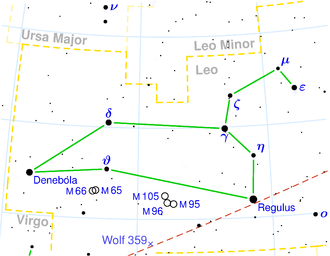NGC 5734
| Galaxy NGC 5734 |
|
|---|---|

|
|
| Infrared image using the Hubble Space Telescope | |
| AladinLite | |
| Constellation | lion |
|
Position equinox : J2000.0 , epoch : J2000.0 |
|
| Right ascension | 14 h 45 m 09.0 s |
| declination | -20 ° 52 ′ 14 ″ |
| Appearance | |
| Morphological type | S0o pec sp; HII; LIRG |
| Brightness (visual) | 12.8 mag |
| Brightness (B-band) | 13.8 mag |
| Angular expansion | 1.5 ′ × 1 ′ |
| Position angle | 38 ° |
| Surface brightness | 13.1 mag / arcmin² |
| Physical data | |
| Redshift | 0.013746 ± 0.000023 |
| Radial velocity | (4121 ± 7) km / s |
|
Stroke distance v rad / H 0 |
(181 ± 11) · 10 6 ly (55.5 ± 3.5) Mpc |
| history | |
| discovery | Francis Leavenworth |
| Discovery date | June 3, 1885 |
| Catalog names | |
| NGC 5734 • PGC 52678 • ESO 580-016 • MCG -03-38-003 • IRAS 14423-2039 • 2MASX J14450905-2052138 • LDCE 1081 NED001 | |
NGC 5734 is a Lenticular Galaxy of the Hubble-type S0 in the constellation Leo . It is around 251 million light years away from the Milky Way .
The galaxy was discovered in 1885 by the astronomer Francis Leavenworth using a 26-inch telescope and later included in his New General Catalog by Johan Dreyer .
